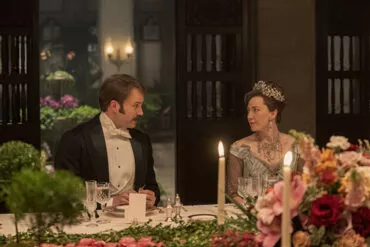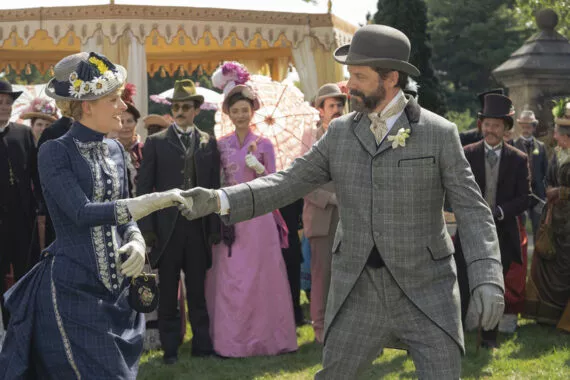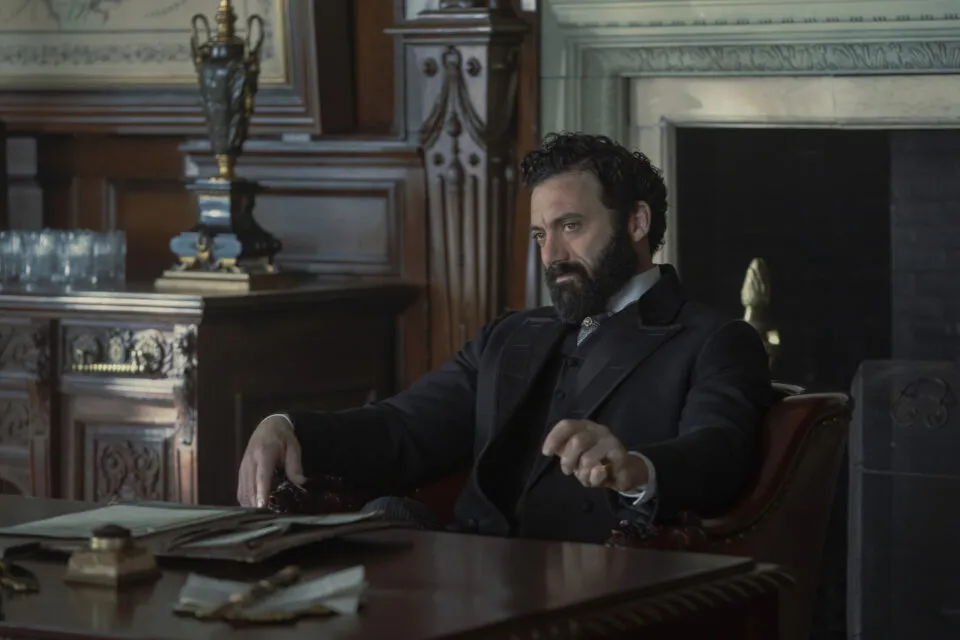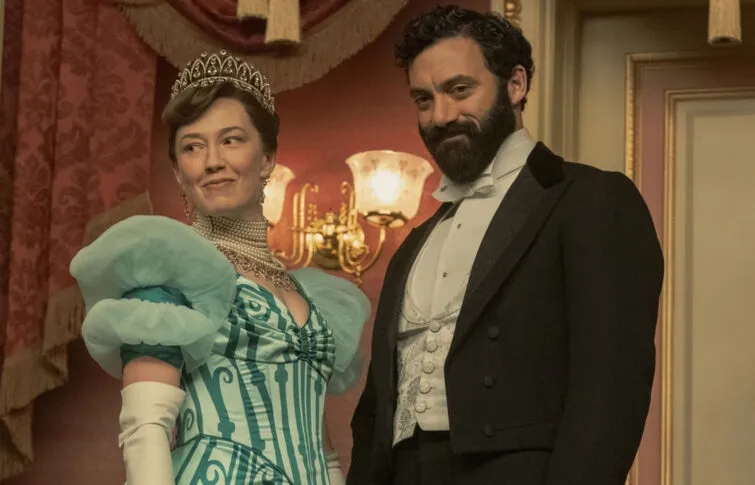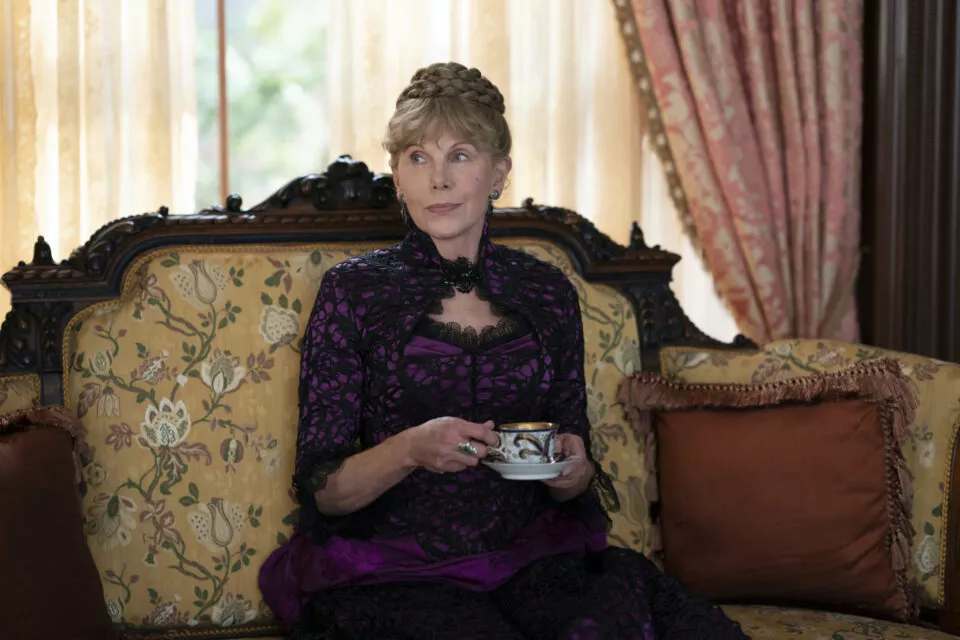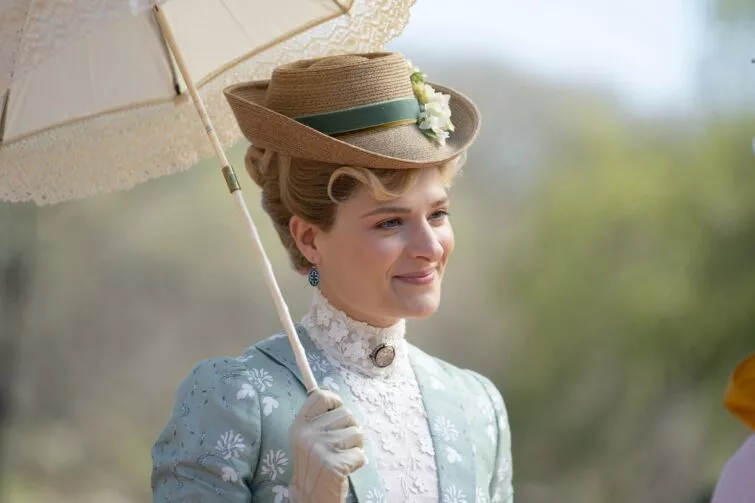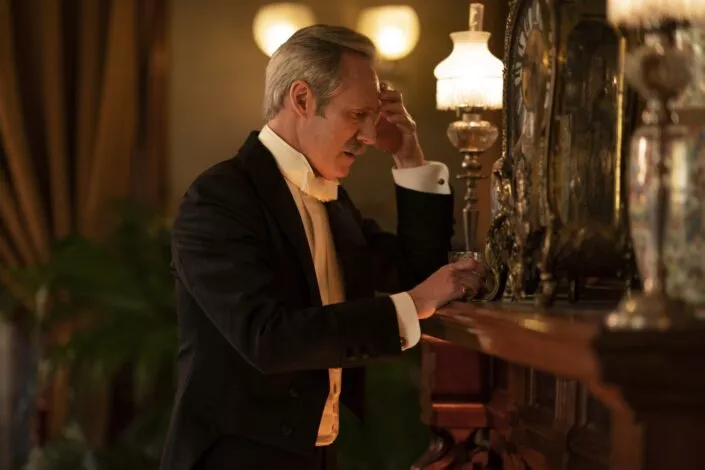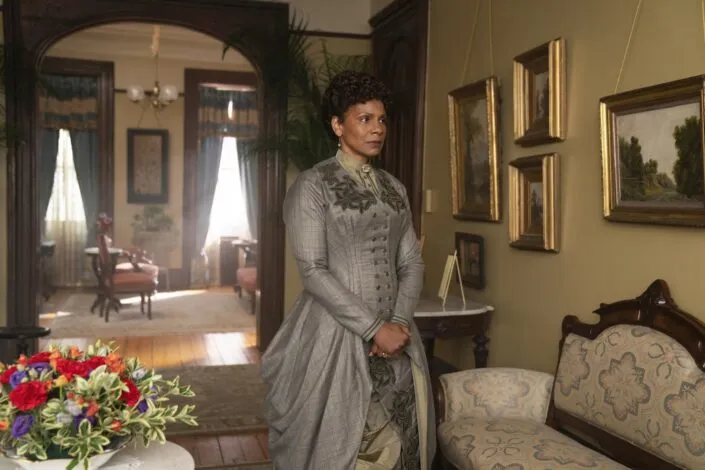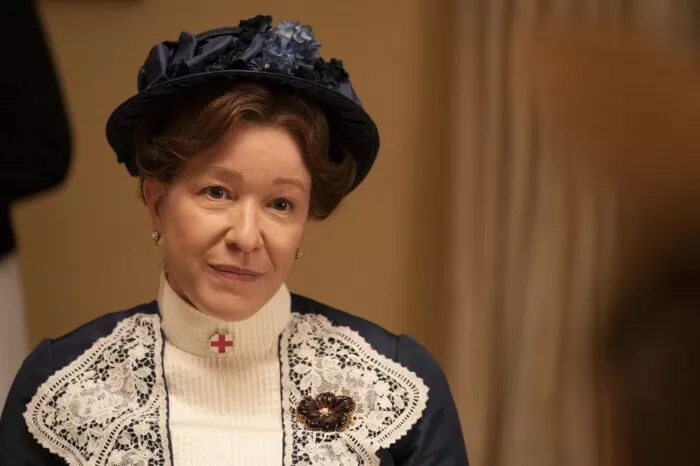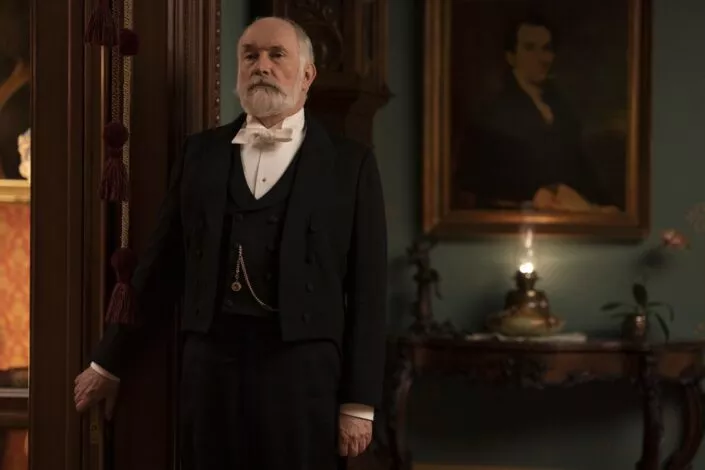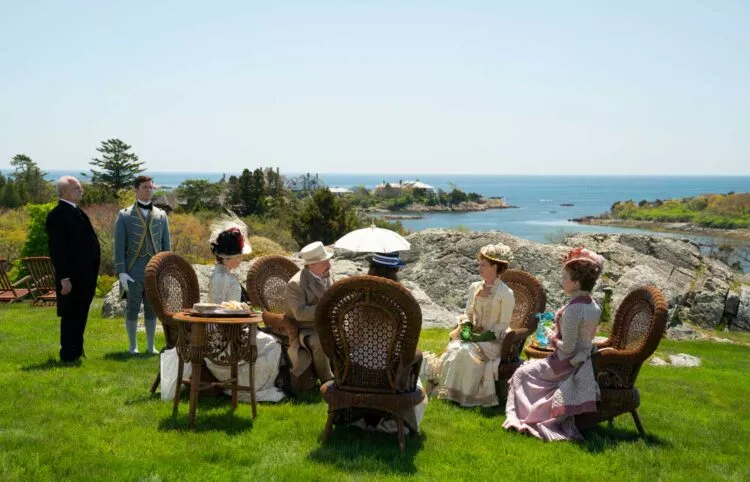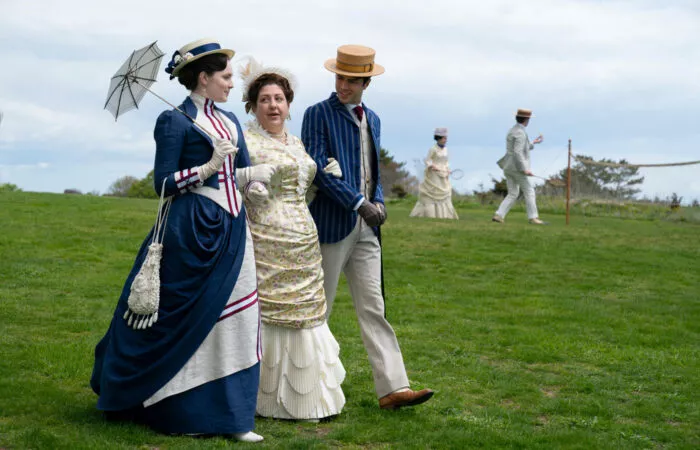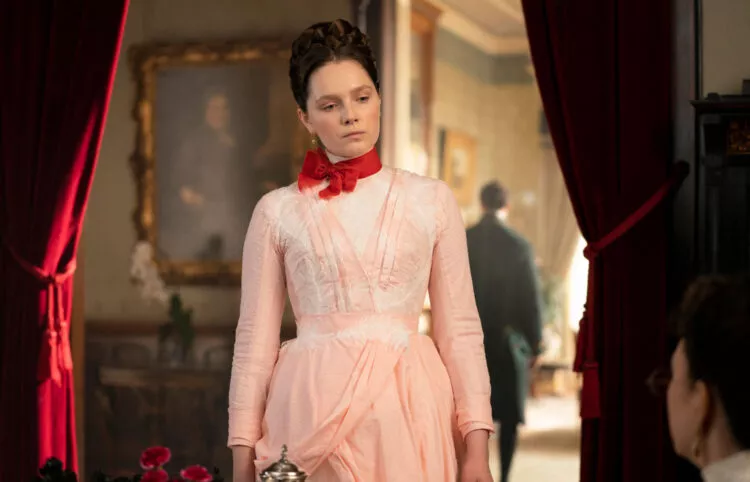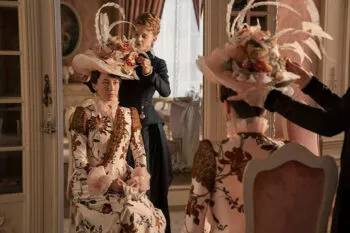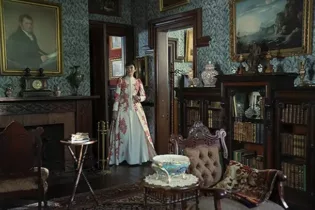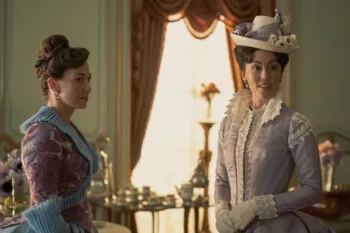Season 2/Episode 5, “Close Enough to Touch”
The Marble House Dining Room is the setting for Bertha Russell’s dinner for the Duke of Buckingham. Peggy narrowly escapes danger in Alabama. Ada’s engagement causes conflict between her and Agnes.
In this Episode…
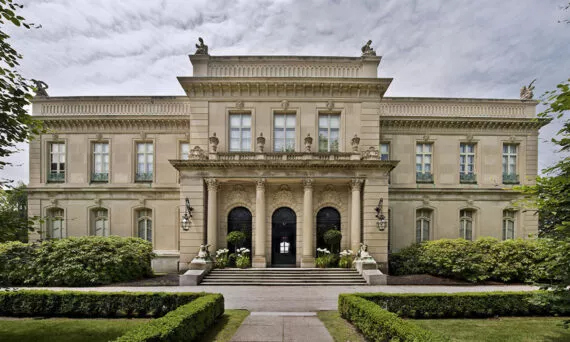
☞ The very first scene is a sweeping aerial view of the front of The Elms, which stands in as the Russell family’s Newport home. Then we are in the front hall with Bertha Russell and the butler, Church, discussing preparations for the upcoming dinner for the visiting Duke of Buckingham. They pass through the Ballroom and into the Drawing Room, where several artworks are seen that really are in that room.

☞ The sound of breaking glass and laughter draws Bertha into the Conservatory, where her son Larry and a friend are still carousing after a night out. This room is very distinctive with its tall windows, potted plants and statuary.
☞ Bertha sends Larry back to New York by having him take a train from Providence. This trip also would have involved a ferry, perhaps from Portsmouth to Bristol, as the Mount Hope Bridge was not completed until 1929. From 1848 until its destruction by fire in 1896, Providence’s rail station was Union Station, designed by young Rhode Island architect Thomas Alexander Tefft (1826-1859).
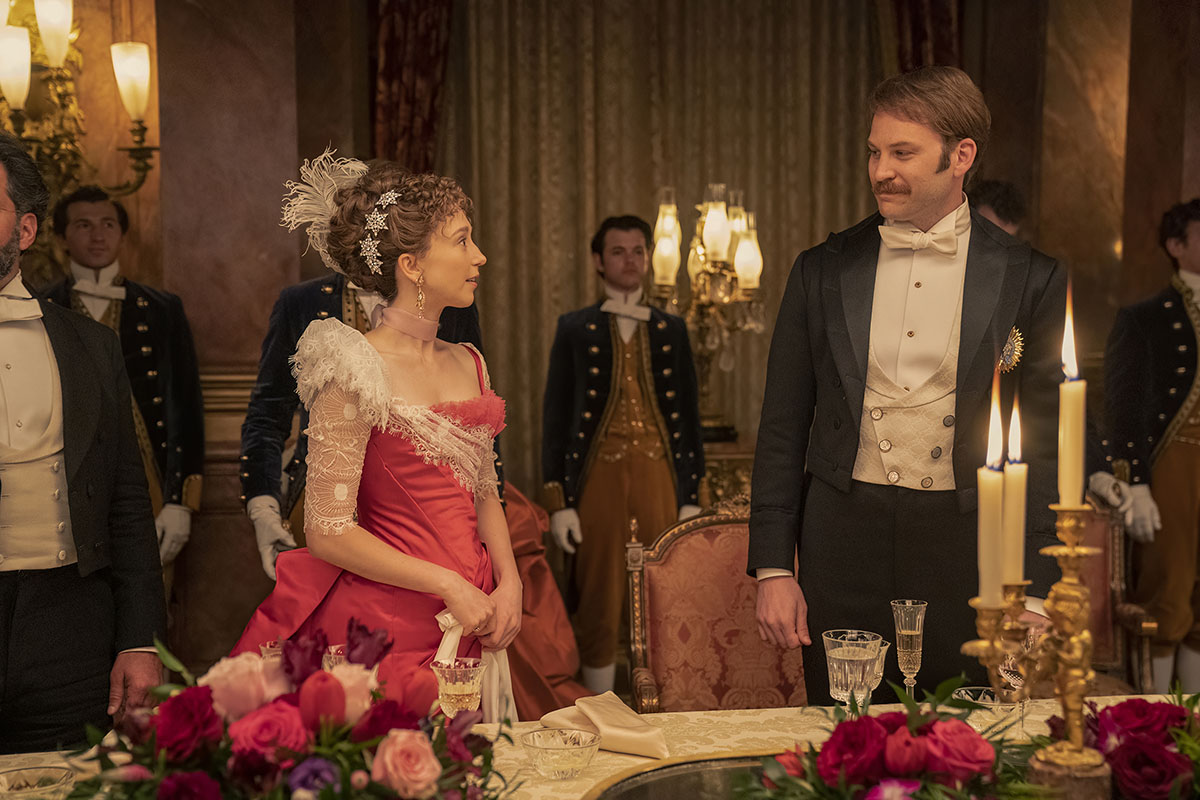
☞ When the scene switches to the Russells’ Newport dining room, suddenly we are no longer in The Elms, but in Marble House. The rose-colored marble, gilded ornamentation, and portraits of Louis XV and the Duke and Duchess of Mantua in the Marble House Dining Room are unmistakable.
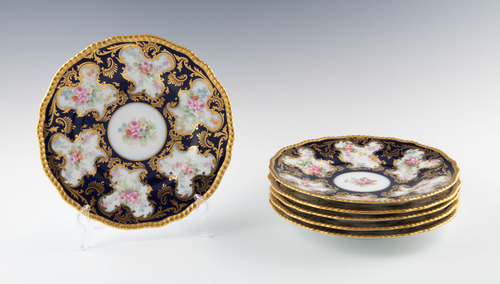
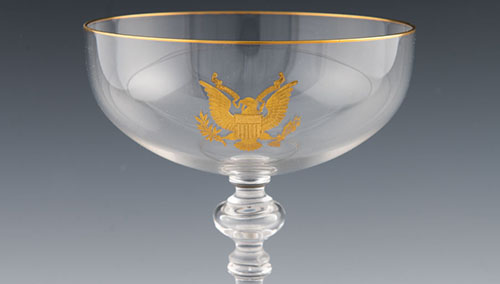
☞ For her dinner in honor of the Duke, Bertha tells butler Church to use the Bernardaud china and Saint-Louis glass. Bernardaud is a manufacturer of porcelain in Limoges, France, though the company was known by the name of its owner R. Delinières until 1900. Saint-Louis is a crystalline glass manufacturer in Lorraine, France, with a history dating back to 1586. Both of these companies still exist today.
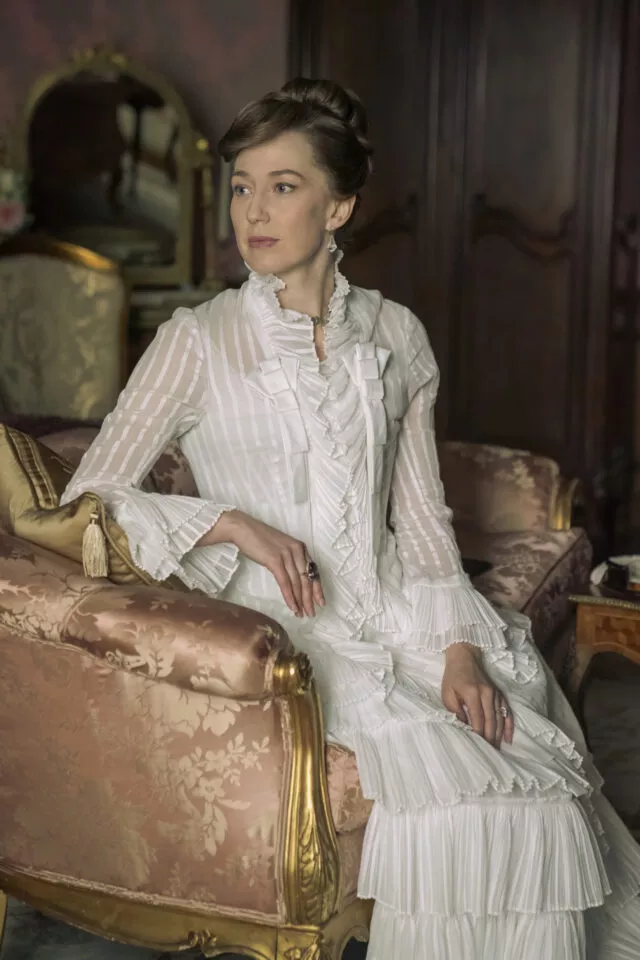
☞ Gladys Russell’s bedroom, with its pink wall coverings, is the Guest Bedroom in Marble House.
☞ Bertha’s insistence on choosing daughter Gladys’ clothes is reminiscent of Alva Vanderbilt, who gave her daughter, Consuelo, little choice in anything.
☞ Emily Warren Roebling (1843-1903) was really a contributor to the design of the Brooklyn Bridge. She was married to Washington Roebling (1837-1926), who became chief engineer of the project after his father, John A. Roebling, died from injuries sustained while surveying the bridge site in 1869. The younger Roebling suffered from decompression sickness caused by doing underwater work on the bridge. Emily took over many of the chief engineering duties and was the first to ride across the new bridge in a carriage.
☞ Clay warns George Russell of a supposed visit to Pittsburgh from the German anarchist Johann Most (1846-1906). Clay also explains the demands of the workers in Pittsburgh: eight hours for work, eight for sleep and eight “for what they will.” Mr. Russell mentions the Labor Day march of the previous year, which probably refers to the gathering of the Knights of Labor in New York City in September 1882.
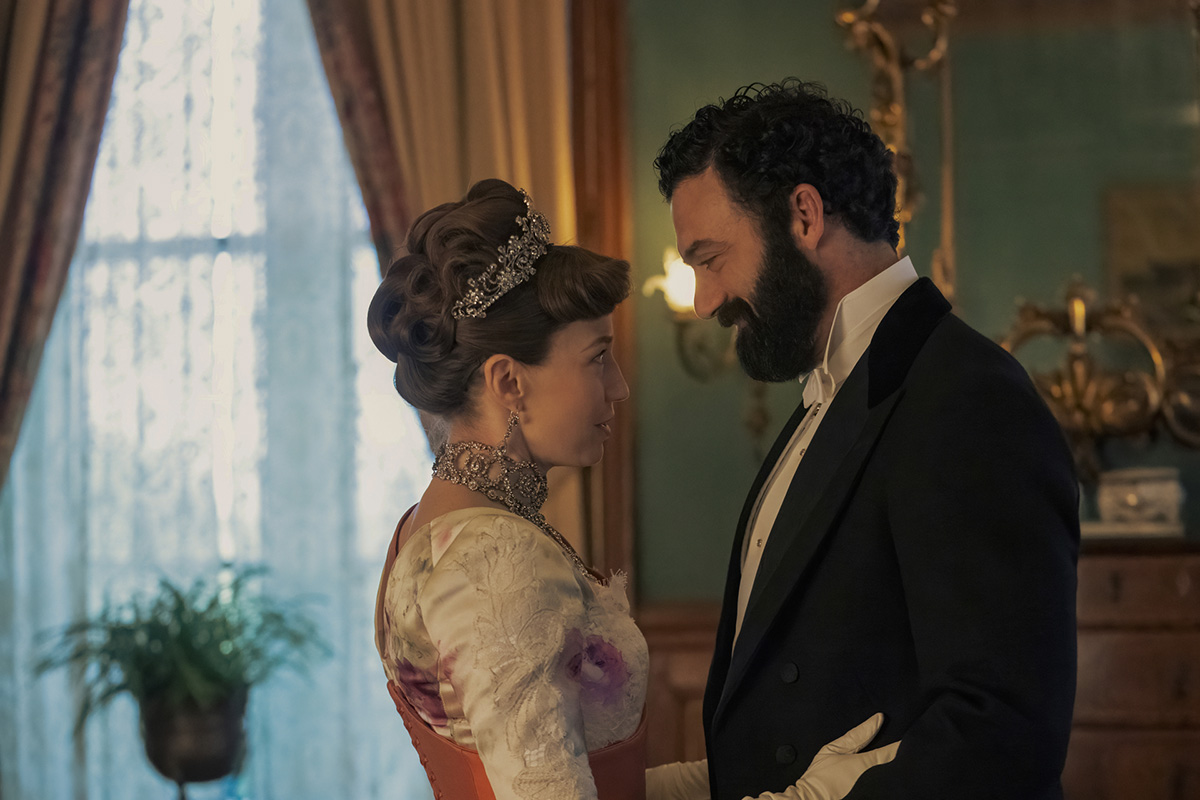
☞ George’s Newport bedroom brings us back to The Elms; this room is commonly referred to as the Green Room.
☞ The Elms Ballroom and Marble House Dining Room are the backdrop for Bertha’s successful dinner for the Duke.
☞ Again there is a parallel between Bertha Russell and Alva Vanderbilt, who similarly courted an English duke and paired him with her daughter, whom he soon married.
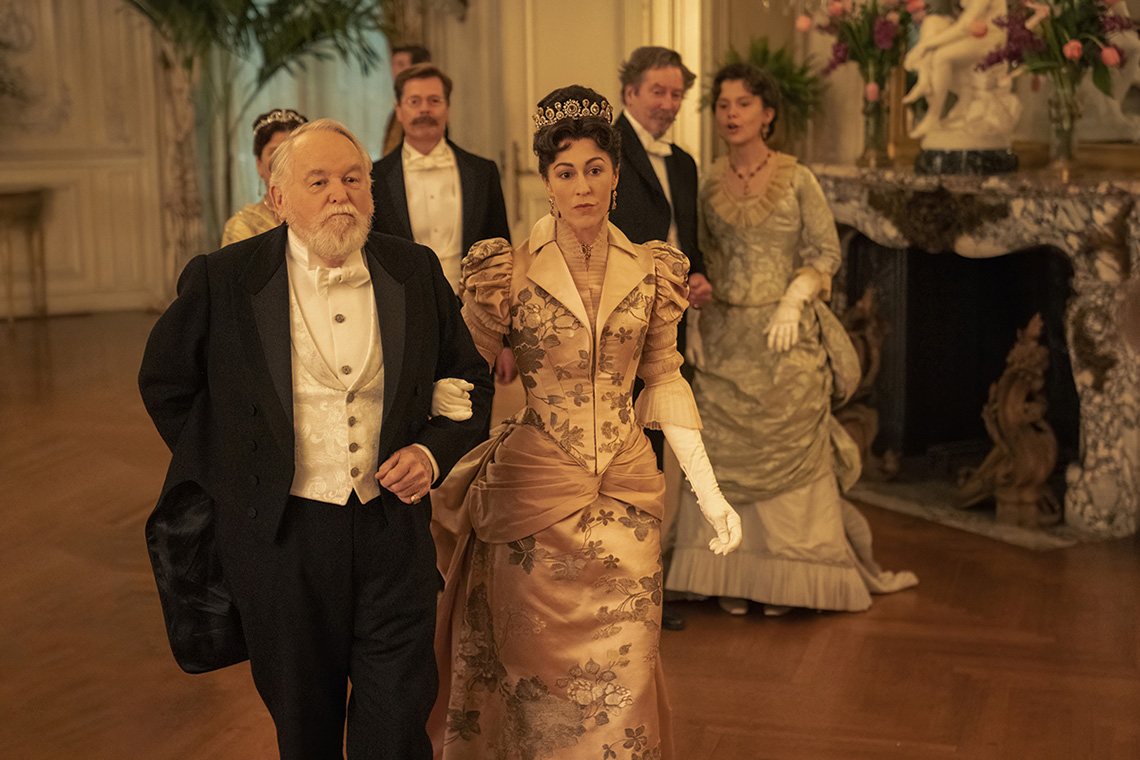
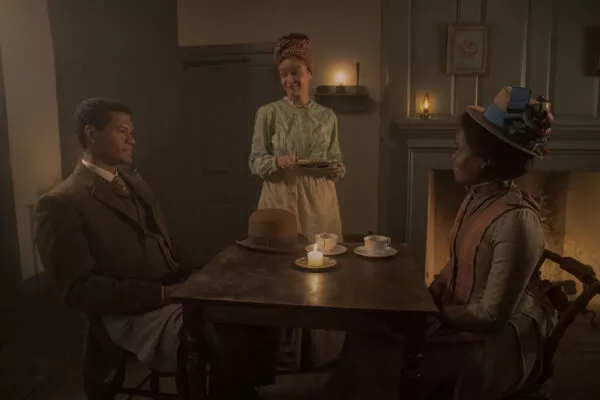
☞ Peggy Scott and T. Thomas Fortune flee Alabama after Fortune tries to defend Black restaurant owner Miss Sturt from the white county commissioner and the encounter turns violent. As they hide in a barn from a lynch mob, the danger is very real. Between 1882 and 1968, 347 people were killed by lynching in Alabama and more than 4,700 nationwide. The Tuskegee Institute began compiling data on lynching in 1908 and these records are the most complete source of information on lynching in the United States.
